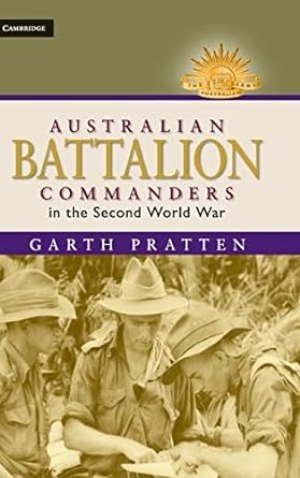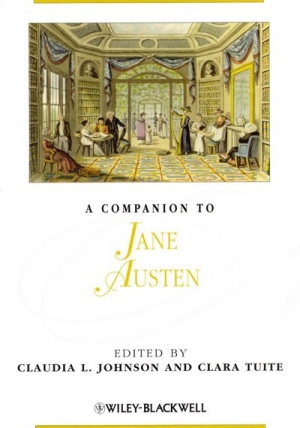Archive
There is a timeless quality about some Australian authors that causes one to applaud when discerning publishers revive their work for new generations of readers. Wakefield Press’s reissue of Alan Moorehead’s The Villa Diana, first published in 1951, presents this fecund author’s book of essays, now subtitled ‘Travels in Post-war Italy’ ($24.95 pb, 224 pp, 9781862548459). It provides a neat introduction to Moorehead’s famous camera-like eye and his beguiling prose, which, as one commentator put it, offers ‘a long conversation that you wish would never end’.
... (read more)In an intriguing coincidence, three recent novels by notable male writers feature central characters who, former members of world-famous rock bands, ruminate on the mess they made of the past. The notion of faded rock stars clearly provides much scope for exploring issues of male ego, sexuality and mid-life crisis. Unlike Nick Hornby (Juliet Naked) and Nick Earls (The Story of Butterfish), Steven Lang is no ‘lad-lit’ writer, though he does delve into similar thematic territory in his second novel, 88 Lines About 44 Women.
... (read more)Judith Armstrong reviews 'Zhivago’s Children: The Last Russian intelligentsia' by Vladislav Zubok
It is genuinely hard for countries like Australia, which have never regarded a powerful and alternative intelligentsia as particularly crucial, to appreciate either the role such an entity famously played in Russia or what a homegrown one might offer.
... (read more)Susan K. Martin reviews 'Cyril Hopkins’ Marcus Clarke' edited by Laurie Hergenhan, Ken Stewart and Michael Wilding
The slightly odd title of this volume – not Marcus Clarke, but Cyril Hopkins’ Marcus Clarke – is reminiscent of a spate of movies in the 1990s, including Bram Stoker’s Dracula and Mary Shelley’s Frankenstein. Those weren’t the authentic products, but this book does present Hopkins’s Clarke, in that much of the volume is made up of his childhood memories of the author of For the Term of His Natural Life (1874) and long extracts from Clarke’s letters to Hopkins.
... (read more)Open Page with Alex Miller
Thursday, 01 October 2009At the moment, my hero is Rimbaud’s self in his Les Illuminations. Who knows who it will be tomorrow? And my heroine? Always Lo.
... (read more)Patrick McCaughey reviews 'Crossing Cultures: Conflict, migration and convergence. The proceedings of the 32nd International congress of the History of Art' edited by Jaynie Anderson
The discipline of art history in Australia has passed through four stages. The foundations were laid in the 1940s with the arrival of three eminent émigrés. Ursula Hoff, schooled in the rigours and erudition of the Warburg Institute, came first. Franz Philipp, a Dunera survivor, well educated in the Viennese School, under Julius von Schlosser and others, came next. Then came Joseph Burke, first Herald Professor of Fine Arts at the University of Melbourne, and a product of the Courtauld Institute in London and the Anglophiliacs of Yale. Hoff would become the first trained art historian to work in a public Australian art gallery. Over the years, she made the Prints and Drawings Room at the National Gallery of Victoria a powerhouse of scholarship and connoisseurship. Burke and Philipp joined forces to create the Department of Fine Arts. Burke modestly proclaimed that ‘Franz was the architect and I was the builder’; I suspect that Philipp felt he was both.
... (read more)Eighteen years ago, Gerald Murnane gave up writing fiction. At least, that is what the unnamed narrator of Barley Patch says happened to him in this new work of fiction, the first to be published by Murnane in fourteen years. It is tempting to think that this book might offer some kind of insight into what led to this hiatus in Murnane’s career. After all, if Murnane is Australia’s most innovative writer of fiction, as the book’s blurb tells us, this period of silence is an absence that should interest careful readers.
... (read more)Jeffrey Poacher reviews 'Australian Literature and the Symbolist Movement' by John Hawke
In one of Kenneth Slessor’s surviving notebooks now held in the National Library, there is a curious entry consisting of approximately eighty names. This appears to be a list of those people the poet counted as friends over his lifetime; many of the names are marked in pencil with the forlorn abbreviation ‘d’. What might a literary historian make of such a list? It might be evidence of a romantic sensibility, a sign of Slessor’s faith in the commemorative powers of language, arguably the precondition for writing elegiac poetry. On the other hand, the list might be held up as proof of a bleak modernism, indicative of Slessor’s existential anxiety, the names being little more than fragments shored against the ruins of time. Of course, the question of whether a particular poet should be regarded as a romantic or a modernist depends entirely on what is meant by those loaded terms. This is one of the pitfalls of literary history: its basic terms of inquiry are often equivocal.
... (read more)John Connor reviews 'Australian Battalion Commanders in the Second World War' by Garth Pratten
Do not be put off by this book’s bland title. In a country that has placed the Anzac Legend at the centre of its national identity, Australian Battalion Commanders in the Second World War is a profoundly subversive book. Cherished ideas of the Australian army as an egalitarian institution and of Australians as natural soldiers whose setbacks can always be blamed on the failings of others (generally the British or the Americans) are put to the test and found wanting. Those looking to have their strident assertions of Australian nationalism validated will be disappointed, but there are already plenty of other Australian military books that can satisfy them. Garth Pratten provides a portrait of Australians at war that is less heroic and more ambiguous, but ultimately more realistic because more human.
... (read more)Penny Gay reviews 'A Companion to Jane Austen' edited by Claudia L. Johnson and Clara Tuite and 'Jane’s Fame: How Jane Austen conquered the world' by Claire Harman
‘If you are afraid of half a dozen speeches,’ cries Mr Rushworth, as the rehearsals for Lovers’ Vows at Mansfield Park are getting underway, ‘what would you do with such a part as mine? I have forty-two to learn.’ Did the editors of the new Blackwell Companion to Jane Austen intend to evoke Mr Rushworth’s self-admiration or his barely disguised anxiety when they commissioned the forty-two essays of this plump, large-format book? The 1997 Cambridge Companionto Jane Austen, by comparison, seems exiguous: thirteen essays of about 7,000 words, edited by two of the Blackwell contributors (Juliet McMaster and Edward Copeland). An updated edition is due later this year, and indeed many of the Blackwell writers also appear in the Cambridge volume.
... (read more)








